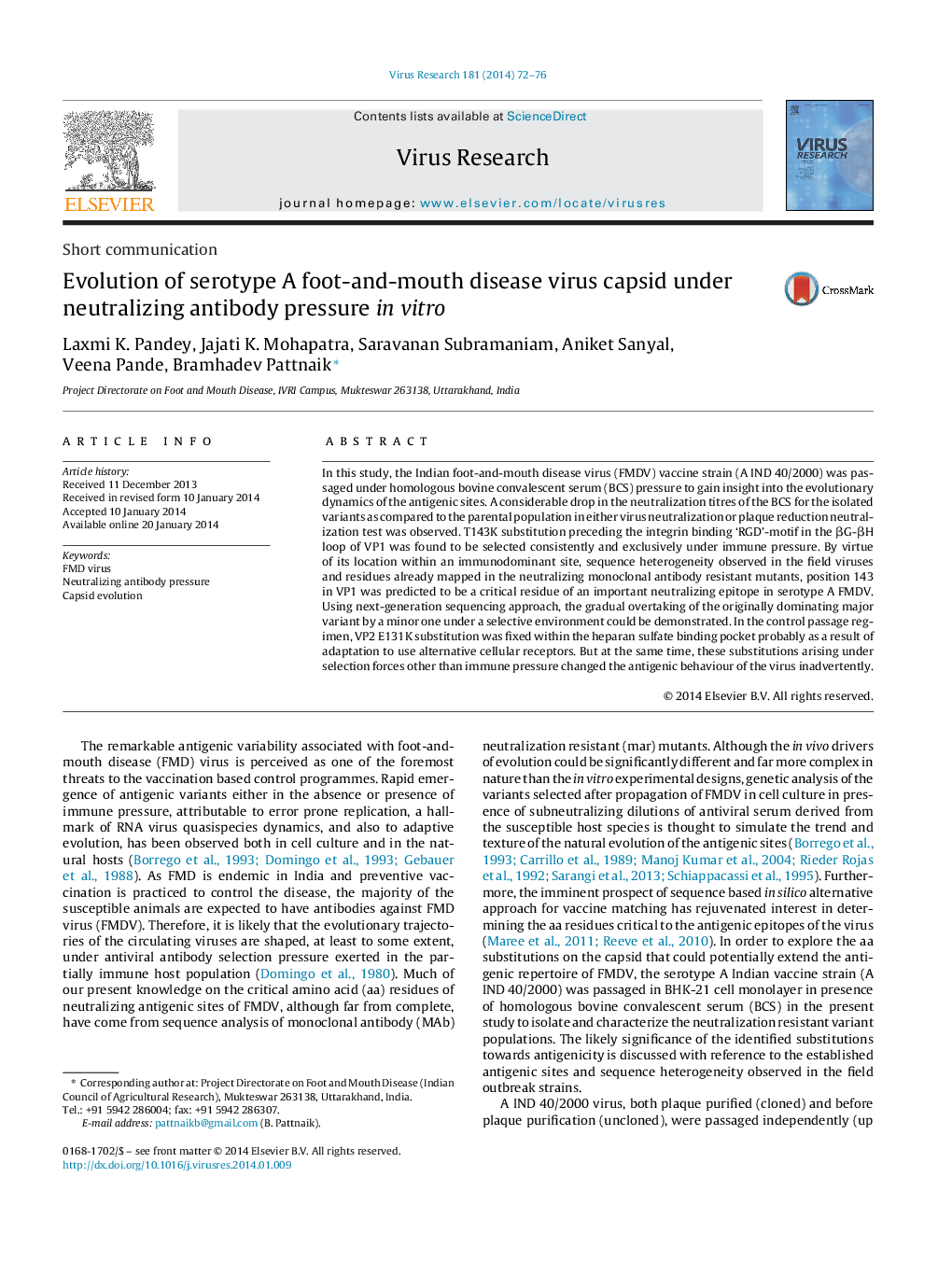| Article ID | Journal | Published Year | Pages | File Type |
|---|---|---|---|---|
| 6142463 | Virus Research | 2014 | 5 Pages |
Abstract
In this study, the Indian foot-and-mouth disease virus (FMDV) vaccine strain (A IND 40/2000) was passaged under homologous bovine convalescent serum (BCS) pressure to gain insight into the evolutionary dynamics of the antigenic sites. A considerable drop in the neutralization titres of the BCS for the isolated variants as compared to the parental population in either virus neutralization or plaque reduction neutralization test was observed. T143K substitution preceding the integrin binding 'RGD'-motif in the βG-βH loop of VP1 was found to be selected consistently and exclusively under immune pressure. By virtue of its location within an immunodominant site, sequence heterogeneity observed in the field viruses and residues already mapped in the neutralizing monoclonal antibody resistant mutants, position 143 in VP1 was predicted to be a critical residue of an important neutralizing epitope in serotype A FMDV. Using next-generation sequencing approach, the gradual overtaking of the originally dominating major variant by a minor one under a selective environment could be demonstrated. In the control passage regimen, VP2 E131K substitution was fixed within the heparan sulfate binding pocket probably as a result of adaptation to use alternative cellular receptors. But at the same time, these substitutions arising under selection forces other than immune pressure changed the antigenic behaviour of the virus inadvertently.
Keywords
Related Topics
Life Sciences
Immunology and Microbiology
Virology
Authors
Laxmi K. Pandey, Jajati K. Mohapatra, Saravanan Subramaniam, Aniket Sanyal, Veena Pande, Bramhadev Pattnaik,
